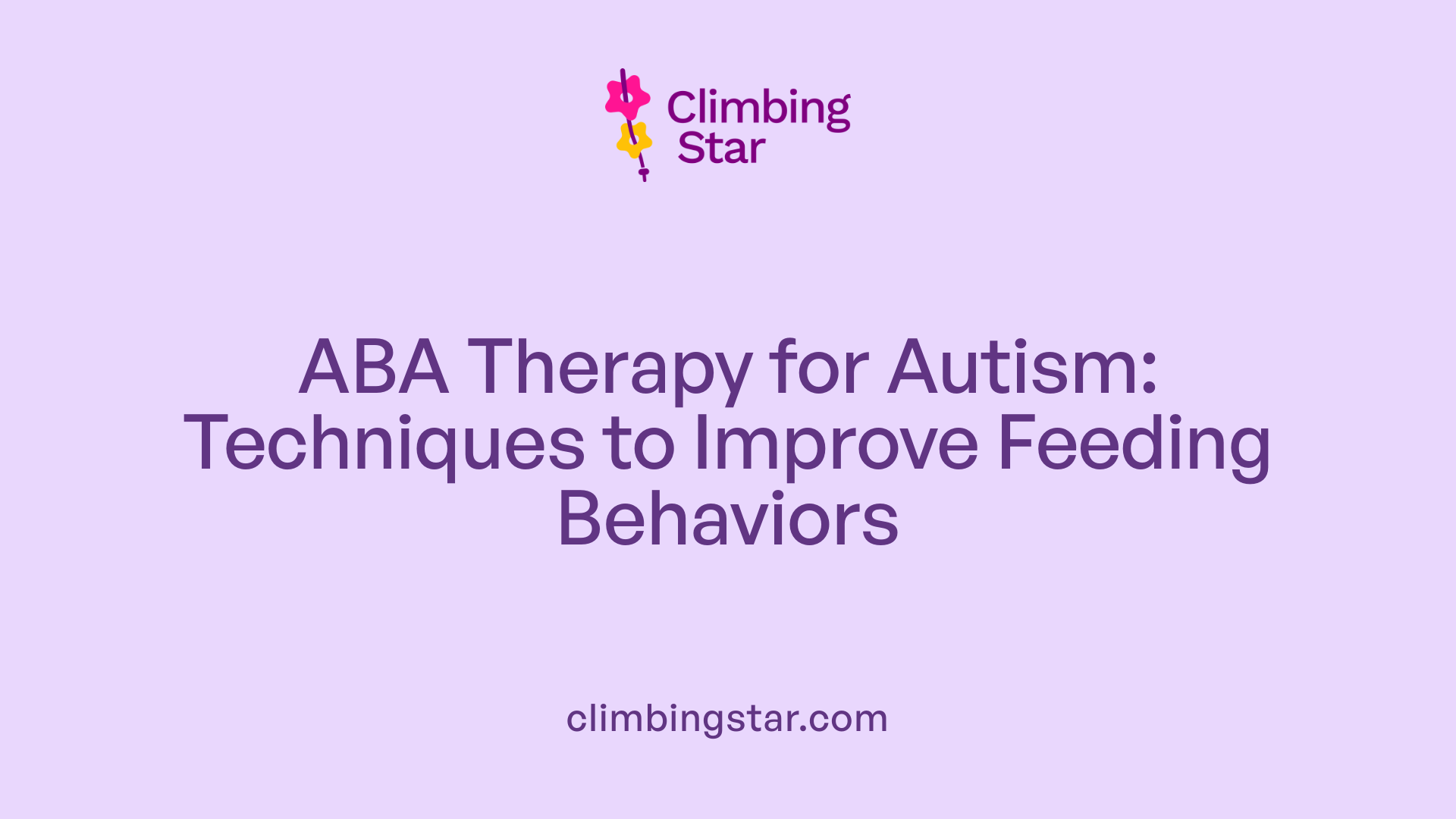Understanding Mealtime Struggles in Autism
Children with autism spectrum disorder often face significant difficulties during mealtimes, ranging from highly selective eating to disruptive behaviors like tantrums. These feeding challenges can impact nutrition, family dynamics, and overall quality of life. This article explores the complexities of picky eating in autistic children and highlights effective strategies and therapies designed to expand food acceptance and improve mealtime experiences.
The Nature and Impact of Picky Eating in Autism

How common are mealtime challenges among children with autism?
Children with autism are five times more likely to face mealtime difficulties compared to their neurotypical peers. These challenges often manifest as narrow food selections, ritualistic eating behaviors, and meal-related tantrums, making mealtimes stressful for both children and their families.
What types of feeding difficulties do children with autism experience?
Feeding difficulties in autistic children can include sensory sensitivities, especially hypersensitivity to certain food textures, which heavily influence food preferences. Other common issues involve behavioral feeding problems, food selectivity, and anxiety surrounding meals. These difficulties may stem from underlying sensory processing issues, inflexibility, or medical problems like gastrointestinal distress.
How do these challenges affect children and families?
Mealtime challenges can lead to significant stress and frustration for children and their caregivers, sometimes resulting in limited diet variety and nutritional concerns. Families often struggle to manage tantrums and ritualistic behaviors, impacting daily routines and overall quality of life. Effective support and interventions are essential to improve mealtime experiences and promote healthier eating habits.
Applying Behavioral Science: ABA Therapy and Autism Feeding Issues

What is Applied Behavior Analysis (ABA) therapy?
Applied Behavior Analysis (ABA) therapy is a scientific approach designed to understand and influence behavior by examining environmental factors. It focuses on how antecedents (what happens before), behaviors, and consequences work together to shape actions—the ABC model. By analyzing and modifying these factors, ABA seeks to encourage helpful behaviors and reduce problematic ones. Treatment is personalized through detailed assessments, aiming to improve skills such as communication, social interaction, and self-care. It is data-driven, with ongoing adjustments to ensure steady progress.
How does ABA therapy help individuals with autism?
ABA therapy supports autistic individuals by building essential skills in structured, individualized ways. Through techniques like positive reinforcement—rewarding good behaviors—and the ABC approach, it helps develop communication, social skills, daily living, and academic abilities. The therapy can be delivered in various settings, including home and school, in both one-on-one and group formats. Research shows that intensive, early interventions with ABA lead to significant improvements in language and social functioning, boosting independence and quality of life.
What are the common techniques used in ABA therapy?
Several techniques are common in ABA therapy to support skill development and behavior change. These include:
- Discrete Trial Training (DTT): Breaking down skills into small parts and practicing them in a controlled setting.
- Natural Environment Teaching (NET): Encouraging learning through child-led, real-world activities.
- Task Analysis: Dividing complex behaviors into smaller, teachable steps.
- Prompting and Fading: Providing prompts to guide responses and gradually reducing support.
- Positive Reinforcement: Rewarding desired actions immediately to encourage repetition.
Other methods, such as Pivotal Response Treatment (PRT) and chaining, tailor therapy to individual needs.
ABA therapy techniques are particularly valuable in addressing feeding challenges common among autistic children, such as rigid food preferences and mealtime anxiety. By using reinforcement and behavior modification strategies, ABA can increase acceptance of new foods and improve mealtime behaviors, complementing sensory and medical approaches in comprehensive feeding therapy programs.
Specialized Feeding Therapy for Autism: Multidisciplinary Approaches

What Is Feeding Therapy and What Are Its Goals?
Feeding therapy is a specialized intervention designed to address the common feeding difficulties experienced by children with autism. These challenges often arise from sensory sensitivities, motor control issues, and mealtime anxiety. The therapy focuses on expanding food acceptance and promoting healthier eating behaviors through a carefully structured plan. A comprehensive evaluation assesses the child’s dietary habits, sensory preferences, and mealtime environment to personalize therapy goals.
How Do Sensory Sensitivities Affect Feeding?
Children with autism frequently experience hypersensitivity, especially to food textures, which significantly influences their food choices. For instance, they may reject foods with unexpected textures or flavors. To accommodate this, therapists may suggest modifying foods by chopping, blending, or changing textures, making new foods more approachable. Gradual exposure and play with foods can help ease these sensory challenges and encourage more diverse eating habits.
How Is a Multidisciplinary Team Involved in Care?
The feeding therapy program at institutions like Kennedy Krieger employs a team-based approach involving medical professionals and behavioral psychologists. This team collaboratively creates individualized treatment plans that effectively address both the medical and behavioral aspects of feeding disorders. Psychologists, occupational therapists, speech-language pathologists, and dietitians each contribute specialized expertise to support the child.
What Program Settings and Levels of Care Are Available?
Feeding therapy services are offered across a spectrum of care settings, including outpatient, day programs, and inpatient options. This variety ensures that the level of care closely matches the child’s needs and challenges. Programs like the Pediatric Feeding Disorder Program provide tailored recommendations after thorough evaluation, emphasizing flexibility and responsiveness to each child's unique requirements.
By integrating medical knowledge with behavioral techniques, feeding therapy provides families with supportive strategies to overcome feeding difficulties, making mealtime a less stressful and more positive experience for children with autism.
Sensory Sensitivities and Feeding: Understanding Texture and Anxiety

What sensory issues commonly affect eating in children with autism?
Children with autism often face sensory challenges that impact their eating habits. One prevalent issue is hypersensitivity to food textures, where certain consistencies can lead to strong aversions. This sensitivity can result in narrow food selections and ritualistic eating behaviors, creating challenges during mealtime. For example, some children might reject foods that feel slimy or gritty, limiting their diet and making nutritional balance harder to achieve.
How can texture sensitivities be managed effectively?
Managing texture sensitivities involves thoughtful modifications and gradual exposure. Techniques like chopping or blending foods help alter textures to make them more acceptable. Psychologist Emily Kuschner, PhD, recommends focusing on specific textures a child tolerates and slowly introducing new ones through repeated, gentle tasting in a calm environment. Playing with new foods without the pressure to eat can also reduce anxiety and increase acceptance over time.
What strategies address anxiety and inflexibility around mealtime?
Anxiety and rigidity around food are common in autistic children and contribute to mealtime challenges. To address this, it's important first to rule out any medical concerns such as gastrointestinal distress. Offering choices within safe parameters can provide a sense of control, reducing resistance. Reward systems should be used cautiously to avoid increasing anxiety. Programs like those at the Pediatric Feeding Disorder Program at Kennedy Krieger combine behavioral psychology with medical expertise to tailor individualized, multidisciplinary treatment plans. Feeding therapy uses approaches like the Sequential Oral Sensory Method and Food Chaining to gradually expand food variety while coaching parents to maintain calm and consistent routines.
This layered approach supports children in overcoming texture aversions and reducing anxiety, leading to improved eating behaviors and a wider diet over time.
Empowering Families and Caregivers in Feeding Interventions

Why Is Caregiver Involvement Important?
Feeding therapy for children with autism relies heavily on the active participation of parents and caregivers. Their involvement ensures that strategies used during therapy extend into daily mealtime experiences, creating consistency and reducing stress. With caregivers engaged, children receive affirmative support in safe, familiar environments which promotes better progress.
Strategies for Managing Mealtime Challenges
Psychologists and therapists encourage caregivers to stay calm during meals and offer choices to give children a sense of control. Gradual exposure to new foods, focusing on textures, and playful interactions with food help ease children into accepting diverse diets. Addressing sensory sensitivities by modifying food textures through chopping or blending can make meals more accessible for children with hypersensitivities.
Therapist Coaching and Creating Supportive Routines
Therapists provide coaching to caregivers on establishing stress-free, consistent mealtime routines tailored to each child’s needs. They guide families on handling tantrums or refusal behaviors with patience and positive reinforcement rather than pressure. This coaching helps caregivers become confident in managing challenging behaviors effectively.
Patience and Gradual Progress Are Essential
Feeding therapy is a step-by-step process that unfolds over time. Success often looks like a slow increase in food variety and improved mealtime behavior rather than immediate change. Supportive caregivers who maintain calm, offer choices, and apply learned techniques contribute greatly to gradual and sustained improvements.
Caregivers typically collaborate with trained professionals such as occupational therapists, speech-language pathologists, and dietitians who specialize in feeding therapy. This partnership combines clinical expertise with hands-on family involvement to address medical, sensory, and behavioral feeding challenges.
Progress and Hope in Managing Picky Eating within Autism
Picky eating in children with autism remains a complex challenge influenced by sensory sensitivities, anxiety, and behavioral patterns. However, multidisciplinary feeding therapies—often integrating behavioral approaches like ABA—offer effective, individualized solutions to expand food variety and improve mealtime experiences. The active involvement of families and caregivers combined with professional guidance provides a supportive foundation for gradual dietary progress. Ongoing research and specialized programs continue to enhance strategies, offering hope for healthier eating behaviors and improved quality of life for autistic children and their families.
References
- Autism and food aversions: 7 Ways to help a picky eater
- Pediatric Feeding Disorders Program
- ABA Feeding Therapy for Autistic Children
- Applied Behavioral Analysis (ABA) Therapists in Georgia
- Expert ABA Therapy Services for Autism | Brady Behavior ...
- How to Become an ABA Therapist - School of Education
- How to Become an Applied Behavior Analyst (ABA) Therapist
- Applied Behavior Analysis (ABA)
- The Top 10 Reasons Children With Autism Deserve ABA







